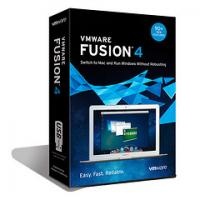Since we’re MacTech, and we’re known for benchmarks, we get questions like “How much faster is VMware Fusion 4 vs. 3?” We decided to put VMware Fusion 4 to the test and compare version 4.0.1 to version 3.1.3, the previous version. As is typical of our benchmarks, this comparison is only about speed, and not about features.
The test was done on the current model MacBook Pro. Specifically, the MacBook Pro 15-inch 2.0GHz Intel Core i7 with 4GB of RAM, a 500GB 5400RPM hard drive, and the dual graphics processor configuration (Intel HD Graphics 3000 and AMD Radeon HD 6490M). The test was performed on Mac OS X “Lion” 10.7.1 with all the current updates from Apple applied and VMware Fusion 3.1.3, and VMware Fusion 4.0.1 running Windows 7 with all current updates applied.
General Virtual Machine Performance
We wanted to see how the virtual machine performed in several areas. These included: launching the virtual machine with a full Windows boot, suspending the virtual machine, launching from suspend, compressing files, File IO, and, of course, graphics.
In most cases, VMware Fusion 4.0.1 was a bit slower in some areas and a bit faster in others to VMware Fusion 3.1.3 with one stand-out: graphics.
What was faster?
° Graphics. 3DMark06 scores were noticeably faster in several cases. Overall, the 3DMark score was about 15% higher.
° Other individual graphics — in particular, Shader Model — were as much as 34% higher scores.
What wasn’t?
° Full Windows boot starting at the Finder, all the way to an IE web page load took about 10% or five seconds longer (about 55 seconds in 4.0.1 compared to about 50 seconds in 3.1.3).
° Suspending the virtual machine took about 18% longer, but was still fast (6.57 seconds in version 4.0.1 and 5.53 seconds in version 3.1.3).
° Compressing files, considered by many to be a good test of raw CPU, was basically the same in both versions.
° File I/O (285MB file folder duplicate on the virtual hard drive) took about the same time to complete as well.
3DMark06/Graphics Performance
If you’ve never heard of 3DMark, it’s the most popular 3D game performance benchmark. Specifically, “3DMark06 is a PC benchmark suite designed to test the DirectX9 performance of your graphics card. A 3DMark score is an overall measure of your system’s 3D gaming capabilities, based on comprehensive real-time 3D graphics and processor tests.” Often, PC gamers will use 3DMark06 to tune their gaming platform. See http://www.futuremark.com/ .
The most important result is the “3DMark Score,” which is an aggregate score that judges the overall 3D graphics performance. As you may remember from previous benchmarks, VMware Fusion 3.1, and 3.0 before it, were troublesome. VMware Fusion 4.0.1 is markedly more stable with graphics generally being drawn much more reasonably. Even better, there’s a noticeable speed increase. And, overall, VMware Fusion 4.0.1 is 15.15% faster than VMware Fusion 3.1.3 in graphics.
A Bump in the Testing Road
When we first started testing VMware’s new version, we were seeing unexpected results. As experienced testers, we’ve learned to trust our gut on what seems right and what doesn’t. After several days of investigation (and we won’t go into that whole trail, but it was tough to figure out), and talking to VMware, we were ultimately able to track it down. There was a problem with the Windows 7 updates since SP1 was released. Whether this is a Windows issue, or a VMware Fusion issue, we don’t know, but regardless, if you fall into the right set, it could have a significant impact on performance for you. However, you can fix it yourself. Note: This issue exists on both 3.1.3 and 4.0.1.
In short, if you are regularly running Windows Update, you are fine. We found that when we installed SP1 and then ran one month of updates at a time, we ended up with a virtual machine that ran well. But, if you installed SP1 (or earlier) and installed all the updates at once, the virtual machine ran much slower. It appears to be most apparent on disk related activities, so the faster your disk, the less you’ll notice this (and with SSDs, you’ll notice it even less).
Conclusion
In answer to the question “Should I upgrade?,” VMware Fusion 4.0.1, in general, performs similar to the previous version (3.1.3) except for graphics that are enough faster we could see the difference. If graphics doesn’t apply to you, your decision on upgrading comes down to features. If the new features do what you want, then upgrade. Just look at which things are most important to you.
See http://www.vmware.com/products/fusion/overview.html


